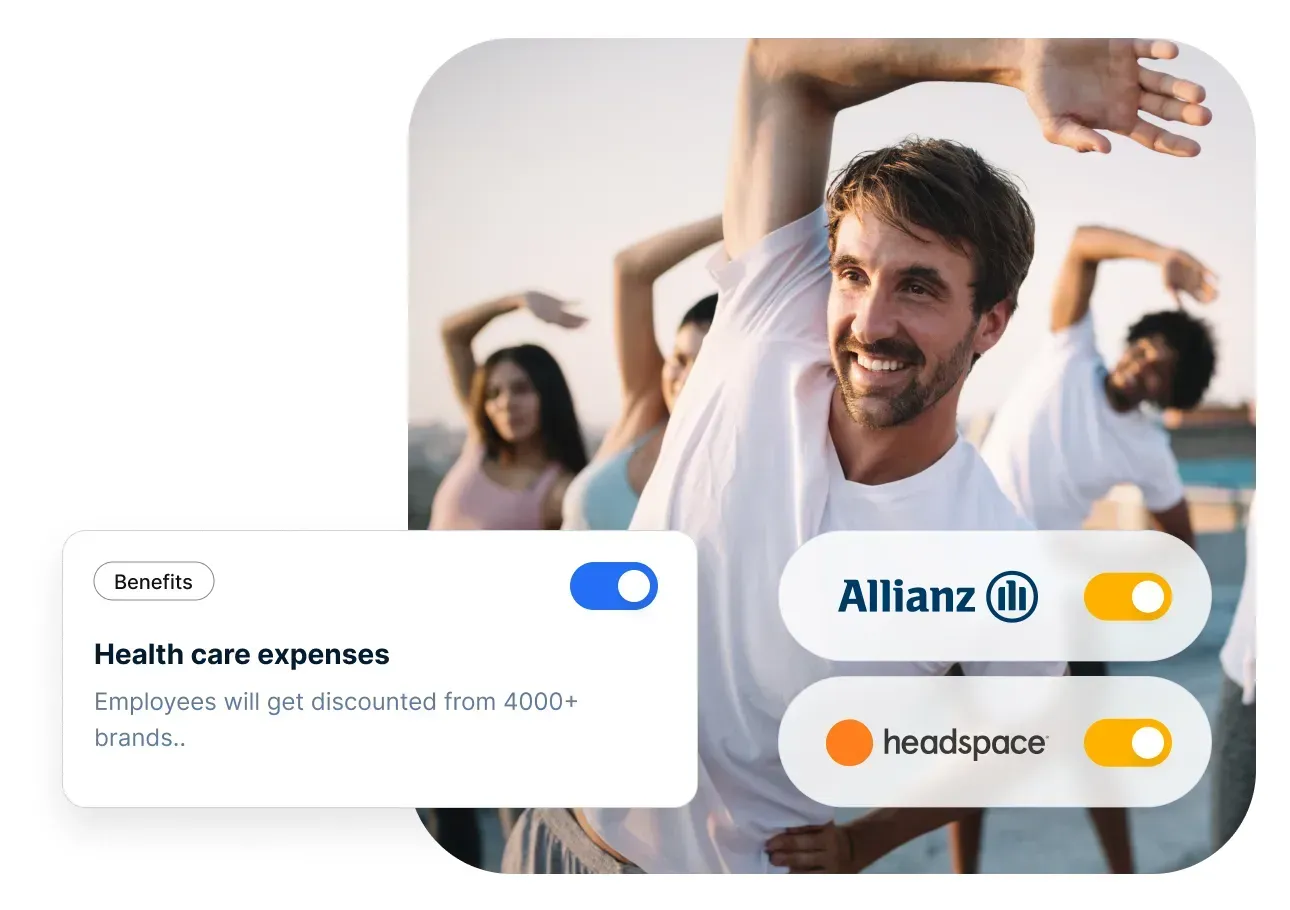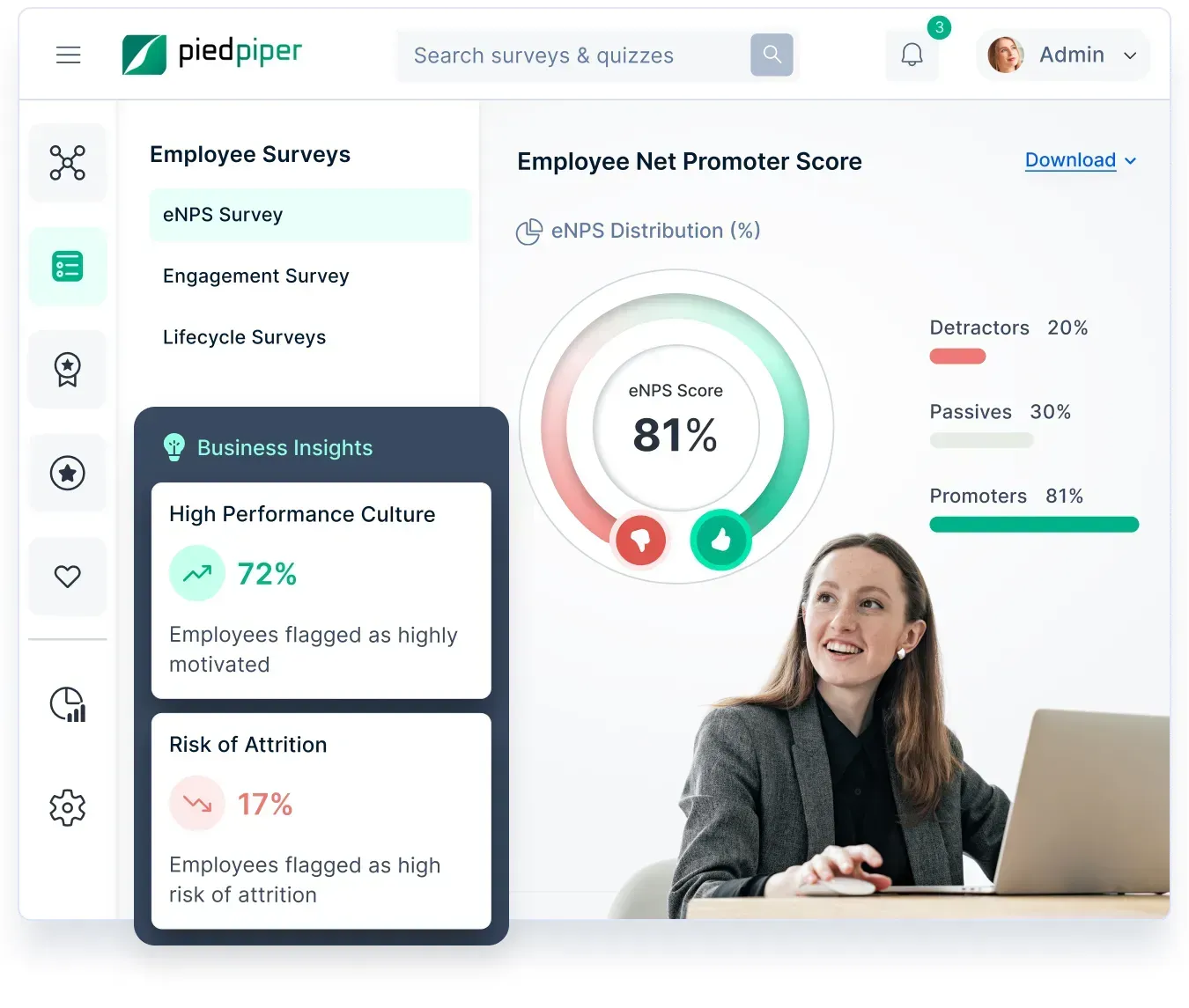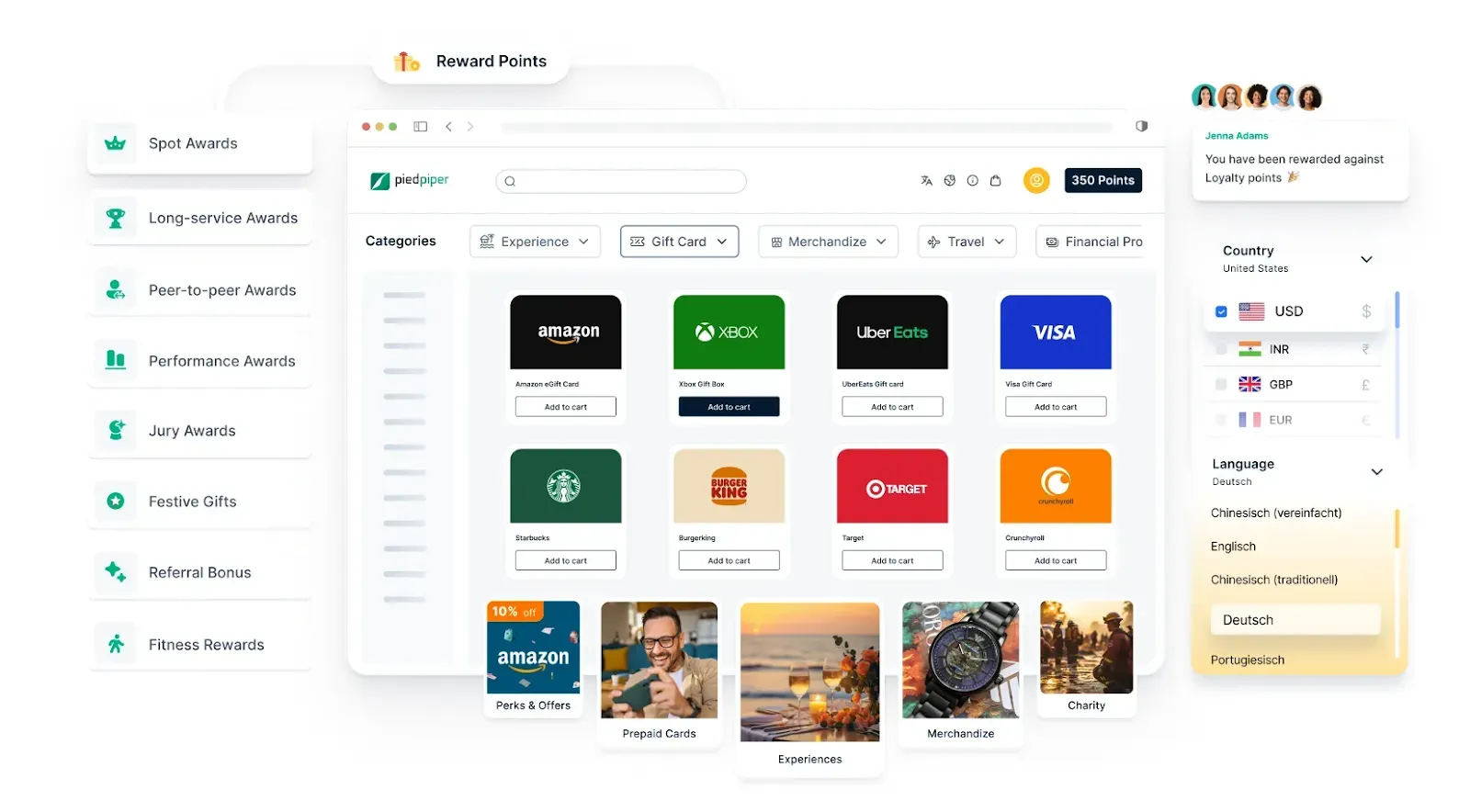How to Motivate and Engage Airline Employees: 7 Proven Ideas
Keeping airline employees motivated is tough when the work involves odd hours, stress, and high stakes. This guide shares hands-on ways to improve engagement across pilots, crew, and ground staff, with real-world examples and tools like Empuls.
On this page
Motivating airline employees is no small task. You’re dealing with people constantly on the move, juggling time zones, stress, and sky-high passenger expectations. Whether it’s a pilot managing back-to-back flights or ground staff handling frustrated travelers, every role in the aviation chain carries its own pressure. That’s why keeping them engaged isn’t just a nice-to-have—it’s directly tied to smooth operations and customer satisfaction.
An engaged airline workforce shows up on time, supports each other mid-crisis, and handles delays with grace. But what keeps them going? This blog breaks down what truly motivates airline professionals and how airlines can build a culture that lifts morale—without needing turbulence to remind them of their value.
Understanding the unique challenges faced by airline staff
Working in the airline industry is not your typical 9-to-5 job. Employees—from cabin crew to ground staff to pilots—face unique challenges that can affect their motivation and job satisfaction. These challenges are not always visible to passengers but heavily impact employee well-being and performance.
- Irregular schedules: Flight timings don’t follow a standard clock. Employees often work during weekends, holidays, and odd hours. Sudden roster changes can disrupt sleep and make it hard to maintain any kind of personal routine.
- Jet lag and fatigue: Constant travel across time zones leads to physical exhaustion. Jet lag can affect mental alertness and mood, especially for long-haul crew who don’t get enough rest between flights.
- High-pressure roles: Airline staff often operate in high-stress environments where quick decisions, safety protocols, and customer complaints need to be handled all at once. It’s emotionally draining and leaves little space to recharge during shifts.
- Physical and mental exhaustion: Long hours on foot, handling passenger queries, and managing difficult situations—especially in crowded airports or during delays—can wear people down. Cabin crew also manage turbulence, medical situations, and tight turnaround times.
- Limited autonomy: Many employees feel like decisions are made for them without their input. Whether it's scheduling or operational changes, lack of involvement makes them feel disconnected from the bigger picture.
- Work-life imbalance: Time away from home is a reality in aviation. Missing birthdays, festivals, or important family moments is common. Over time, this emotional disconnect can impact their engagement with the job.
Recognizing these issues helps employers build programs and processes that not only acknowledge these stressors but also work to reduce their long-term impact.
Top drivers of motivation in the airline industry
Motivating airline employees goes beyond offering high salaries. It’s about creating an ecosystem where they feel valued, supported, and aligned with the company’s mission. These key drivers influence how engaged your staff stays—whether they’re handling passengers at the gate, navigating the skies, or maintaining aircraft on the ground.
1. Appreciation from leadership
A genuine ‘thank you’ from a manager or public praise in front of the team can do wonders. Recognizing an employee’s quick thinking during a flight delay or calm handling of a tough passenger can reinforce positive behavior. Platforms like Empuls allow airlines to send timely, personalized appreciation notes—public or private—to acknowledge employees on the go.
2. Sense of purpose in their roles
Airline employees contribute to more than just transport—they help families reunite, support tourism, and make global business possible. When this larger purpose is reinforced in internal communication and onboarding, employees feel part of something bigger. This deeper connection fuels long-term motivation.
3. Team bonding and camaraderie
Whether it’s cabin crew working together during turbulence or ground staff managing tight boarding schedules, teamwork is essential. Encouraging shared wins, peer recognition, and social collaboration—especially through platforms like Empuls, which offers peer-to-peer shoutouts—can help build stronger bonds across departments.
4. Opportunities for growth and learning
Employees want to grow, not stay stuck in repetitive roles. Providing access to upskilling programs, cross-departmental training, or mentorships helps them map a career within the airline—not outside it. Career progress is one of the strongest motivation triggers, especially in high-turnover roles.
5. Meaningful rewards—not just money
While financial incentives work, personalized rewards have a lasting impact. Think discounted hotel stays, lounge passes, or a dinner voucher for the employee and their family. Empuls makes it easy to curate a mix of digital and physical rewards that employees can choose based on their preferences.
6. Respect and autonomy in everyday work
When employees feel trusted, they step up. Giving them space to make decisions during passenger interactions or operational hiccups helps build ownership. Autonomy is especially valuable in aviation where real-time problem-solving is common.
7. Supportive and transparent work culture
Employees stay longer where they feel safe to speak up. Creating channels for feedback, responding to concerns, and involving employees in decision-making promotes trust. Recognition tools like Empuls pulse surveys can help leaders gather real-time insights on morale and engagement.
When these motivation drivers are integrated into everyday work life, airline employees don’t just show up—they show up with intent, focus, and pride.
Strategies to motivate and engage airline employees
Every airline employee—from the tarmac to the cockpit—carries a different kind of responsibility. So, a one-size-fits-all approach to motivation doesn’t work. What does? A blend of practical support, personal appreciation, and growth opportunities. Below are detailed strategies that help airlines turn their workforce into a loyal, high-performing team.
1. Offer flexible roster planning tools
Rigid rosters can push even the most committed employees toward burnout. When schedules constantly shift or lack predictability, it disrupts sleep, personal plans, and even health. Offering flexible roster systems—where employees can bid for shifts, swap with peers, and access their schedules in real-time—makes a huge difference.
A digital platform that allows shift planning and visibility weeks in advance can ease anxiety. It also reduces absenteeism and last-minute no-shows, as employees can manage their time better. Airlines that respect their teams’ time get respect in return.
2. Recognize employee efforts consistently and publicly
Recognition should not be reserved for annual awards. In aviation, where every day is unpredictable, small wins matter. Catching someone doing something right—like handling a flight delay with calm professionalism—deserves timely recognition.
Platforms like Empuls make it easy to celebrate employee achievements regularly. Managers can send instant kudos, award digital badges, or run peer-nominated spot awards. Recognition is also visible to the wider team, making the praised employee feel valued and setting a positive example for others.
Whether it’s an “Above & Beyond” award for crew or a “Customer Delight” shoutout for ground staff, consistent recognition builds a culture of appreciation.
3. Provide wellness and mental health support for all staff
The airline work environment is physically demanding and mentally draining. Extended flight hours, time zone changes, and passenger conflict can take a toll on emotional health. Ignoring these factors can lead to burnout, absenteeism, and disengagement.
Airlines must move beyond just offering health insurance. Proactive wellness support means providing access to:
- On-call mental health counselors
- Pre-flight fatigue assessments
- Meditation and rest areas in crew lounges
- Workshops on handling stress and customer conflict
You can even integrate wellness recognition through Empuls, where healthy behaviors like taking regular breaks or attending wellness sessions are rewarded. When staff see wellness as part of company culture—not just a buzzword—they begin to prioritize their own well-being too.

4. Foster transparent and two-way communication
Employees feel disconnected when communication only flows from the top. The more involved they feel in the airline’s operations, the more engaged they become. Regular updates about business changes, safety protocols, or even appreciation for performance during peak travel seasons help build trust.
But more importantly, employees want to be heard, too. This is where tools like Empuls pulse surveys play a considerable role. They help management collect feedback at scale, quickly analyze trends, and act on insights, without needing complex HR systems. Whether it’s a new uniform policy or issues with scheduling, feedback loops help employees feel involved in the decision-making process.

5. Invest in cross-training and growth opportunities
Airline staff don’t want to feel stuck. When they don’t see a future beyond their current job title, they disengage. But with structured learning programs, even entry-level staff can aspire to higher roles within the airline.
Cross-training helps fill gaps internally while giving employees fresh skills. For example:
- Cabin crew learning basics of ground ops
- Ground staff being trained in customer service escalation
- Senior crew joining training and recruitment panels
Growth also means making internal mobility easy. Regular skill assessments, mentoring programs, and fast-track promotions motivate employees to stay and grow within the airline instead of seeking opportunities elsewhere.
6. Reward high performance with personalized incentives
Standard bonuses don’t always hit the mark. Personalized rewards create a deeper emotional impact. Someone who flies international routes might appreciate hotel vouchers for their family, while someone working night shifts might value extra off-days.
This is where a reward system like Empuls shines. It allows employees to choose from a catalogue of gift cards, experiences, gadgets, or even charitable donations. This choice makes them feel in control, which adds a layer of satisfaction beyond the reward itself.
Performance-based incentives should also be transparent. Employees must know what qualifies as high performance, how they’re being tracked, and when they’ll be rewarded.

7. Involve employees in operational decisions
When employees are treated as just executors of plans, their motivation drops. But when they’re invited to shape those plans—adjusting ground turnaround procedures or suggesting inflight experience upgrades—they feel trusted and empowered.
Form small working groups from different departments to co-design operational improvements. Listen to their insights and pilot their suggestions. Even better, recognize those contributions openly.
This doesn’t just drive innovation—it strengthens commitment to the airline’s goals because employees helped build the roadmap themselves.
These strategies aren’t just theories but practical moves that make people feel valued, supported, and invested. Airlines can turn engagement into a strategic advantage with the right tools like Empuls and a leadership mindset focused on consistency and care.
Engaging ground staff, cabin crew, and pilots differently
Every role in an airline comes with its pressures, expectations, and working environment. A cabin crew member navigating a turbulent flight has a different experience from a pilot managing air traffic or a ground handler coordinating a delayed boarding gate. So, engagement efforts need to be role-specific, not generic.
Let’s break this down across three core employee groups:
Ground staff: consistency, support, and recognition
Ground staff are the first point of contact for passengers. They deal with everything from check-in delays and excess baggage arguments to rebooking passengers during disruptions. Often, they bear the brunt of customer frustration without much public credit.
Engagement strategies for ground staff:
- Provide proper staffing levels and shift breaks, especially during peak travel periods.
- Run real-time recognition programs that highlight outstanding service under pressure.
- Use tools like Empuls to set up monthly “Frontline Hero” badges based on peer or supervisor nominations.
- Offer upskilling opportunities, such as ticketing system certifications or customer conflict resolution workshops.
- Give them channels to report operational issues and suggest improvements.
Feeling heard and supported helps ground staff stay resilient, even during chaotic hours.
Cabin crew: wellness, empowerment, and visibility
Cabin crew are often seen as the smiling face of the airline, but behind the scenes, they deal with physically demanding work, minimal rest, and unpredictable passenger behavior. They're also away from home regularly, which strains personal relationships and mental health.
Engagement strategies for cabin crew:
- Offer mental health check-ins before and after long-haul flights.
- Let them vote for preferred layover destinations or rest hotel options, when possible.
- Give autonomy in personalizing the in-flight experience (e.g., creative announcements, handling customer requests).
- Recognize crew members in real-time through mobile-enabled platforms like Empuls, where colleagues and leads can send appreciation, even mid-flight.
- Organize crew-only events or digital communities to maintain bonding across shifts and routes.
Crew members who feel appreciated and empowered stay motivated, even with jet lag.
Pilots: trust, growth, and involvement
Pilots carry immense responsibility but often feel disconnected from engagement initiatives. Their schedules are tight, and interactions with airline leadership are minimal. They also tend to receive recognition only during extreme circumstances, which leads to low visibility of their daily wins.
Engagement strategies for pilots:
- Involve them in safety innovation discussions or route planning workshops.
- Provide continuous learning programs like simulator training, aviation tech briefings, or future instructor roles.
- Create formal appreciation programs beyond just tenure-based recognition—celebrate decisions that avoid delays, handle emergencies, or support fellow crew.
- Use tools like Empuls Pulse Surveys to gather anonymous feedback about scheduling, rest hours, or cockpit resources.
When pilots feel included in broader conversations—not just technical ones—their connection with the airline strengthens.
Customizing engagement for each role shows employees that their experiences are understood, not lumped into one generic “staff” category. It’s that level of personalization that keeps employees emotionally invested and proud to wear the airline’s badge.
Case examples from the airline industry
Theory only gets you so far—real change comes from practical execution. Here are examples of how different airlines have motivated and engaged their employees with impactful yet straightforward initiatives. Each case highlights how recognizing effort, encouraging ownership, or offering the right benefits can directly influence engagement on the ground and in the skies.
1. A budget airline’s peer-recognition leaderboard
A Southeast Asian low-cost carrier rolled out a peer-to-peer recognition program where crew and ground staff could nominate each other for small wins—like diffusing a tense situation or handling a last-minute gate change.
These nominations appeared on a digital leaderboard, visible to everyone across shifts. Winners were rewarded with airport lounge passes and experience vouchers. The airline noticed a 27% increase in internal recognition within three months, and a drop in crew-to-crew conflicts.
2. Premium carrier offering sabbatical and rest incentives
One Middle Eastern premium airline introduced short sabbaticals for long-haul flight crew after a stretch of exhausting schedules. Instead of pushing through fatigue, crew could take a 7-day paid rest period after every four long-haul rotations.
To top it off, the airline introduced sleep quality bonuses, where wearables were used to track rest quality, and those maintaining optimal rest cycles received additional incentives. The result? Lower sick leaves, better on-board passenger scores, and improved team morale.
3. Using Empuls to create a recognition-first culture
An Indian regional airline deployed Empuls across its ground staff and cabin crew divisions. Instead of waiting for end-of-month HR shoutouts, team leaders were trained to use Empuls daily—sending badges, bonus points, and appreciation messages tied to specific actions.
In six months:
- Over 3,000 recognitions were exchanged across 11 airports
- Employee engagement scores jumped by 18%
- Participation in optional internal upskilling workshops doubled
The company later tied these rewards to career progress, turning Empuls into a motivator beyond just praise.
4. Using internal apps for crew feedback and scheduling fixes
A European airline introduced a mobile feedback loop via their internal crew app. After every flight, employees could quickly submit a “frustration flag” or “what went well” note. This data was then reviewed weekly by crew scheduling and operations teams.
As a result of this system, the airline identified recurring issues with certain routes, reassigned equipment, and adjusted rosters accordingly. More than 65% of employees said they felt “more heard” after launching this initiative.
These examples prove one thing: small, intentional actions—done consistently—can reshape how employees experience their workplace. It’s not always about big budgets; it’s about relevance, timing, and follow-through.
Conclusion
Airline employees operate in an environment where pressure, unpredictability, and physical strain are part of the daily routine. That makes motivation and engagement not just helpful—but essential. When airlines actively work to understand each role’s unique challenges and support their teams with timely recognition, fair policies, wellness support, and opportunities to grow, employees respond with loyalty and performance.
Whether it’s using tools like Empuls to simplify appreciation, gathering feedback to improve crew schedules, or designing personalized rewards—every effort counts. Motivation doesn’t come from one grand gesture; it comes from small, thoughtful actions repeated every day.
A more engaged airline workforce isn’t just happier—it’s more resilient, more focused, and more aligned with delivering exceptional passenger experiences.
Make recognition easy, feedback fast, and rewards more meaningful—no matter where your team is based.
→ Start with Empuls Today
FAQ's
How are employees nominated for recognition in the rewards program?
Explore the process of nominating employees, whether it's through peer recommendations, manager nominations, or a combination of both.
What types of rewards are offered in the recognition program?
Provide details on the variety of rewards available, including monetary incentives, non-monetary perks, and any special recognition events or ceremonies.
How often are recognition programs evaluated and adjusted?
Discuss the frequency and process of program evaluations, ensuring that the rewards and recognition initiatives remain effective and aligned with the organisation's goals and values.


















